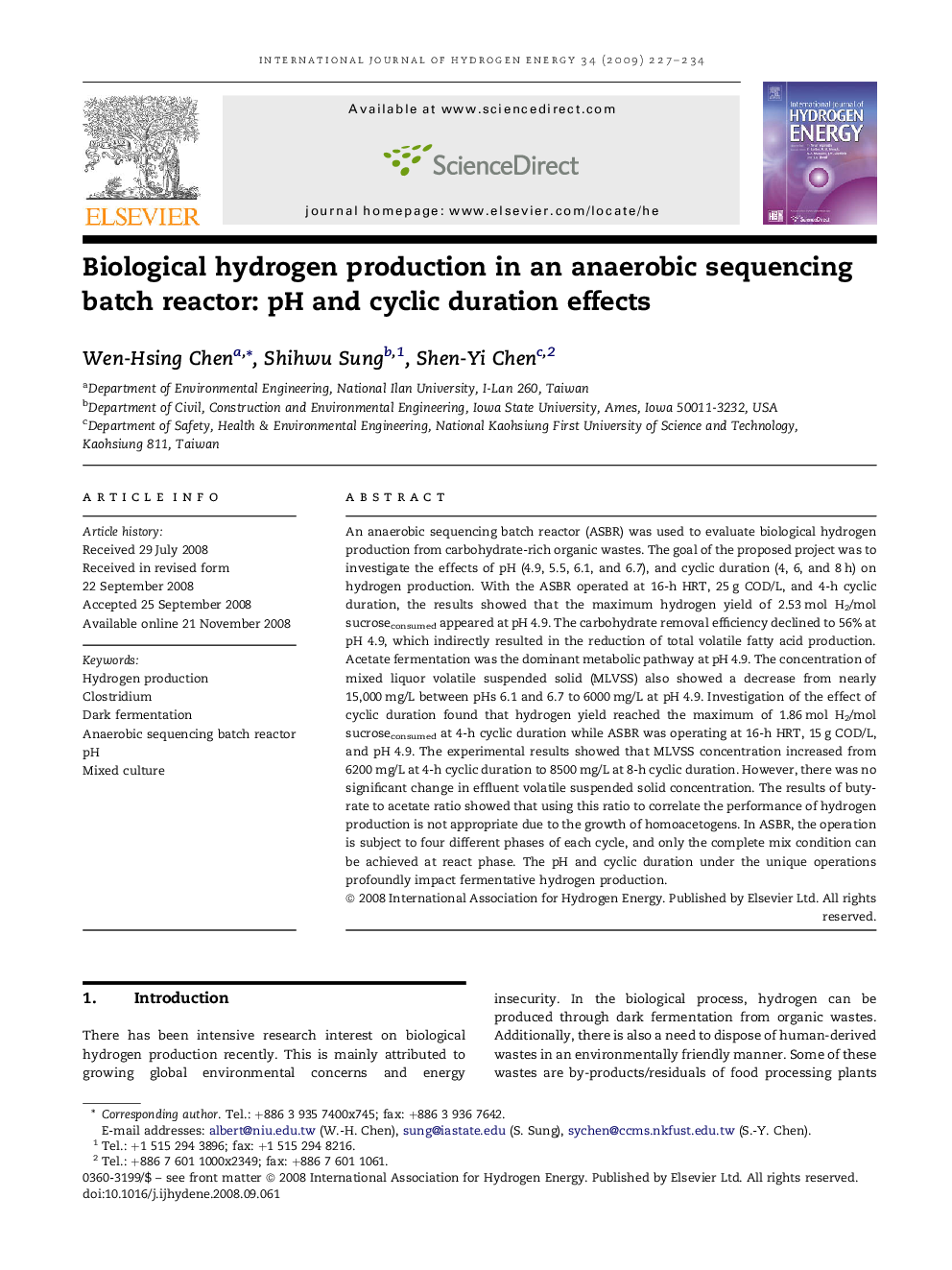| Article ID | Journal | Published Year | Pages | File Type |
|---|---|---|---|---|
| 1278067 | International Journal of Hydrogen Energy | 2009 | 8 Pages |
An anaerobic sequencing batch reactor (ASBR) was used to evaluate biological hydrogen production from carbohydrate-rich organic wastes. The goal of the proposed project was to investigate the effects of pH (4.9, 5.5, 6.1, and 6.7), and cyclic duration (4, 6, and 8 h) on hydrogen production. With the ASBR operated at 16-h HRT, 25 g COD/L, and 4-h cyclic duration, the results showed that the maximum hydrogen yield of 2.53 mol H2/mol sucroseconsumed appeared at pH 4.9. The carbohydrate removal efficiency declined to 56% at pH 4.9, which indirectly resulted in the reduction of total volatile fatty acid production. Acetate fermentation was the dominant metabolic pathway at pH 4.9. The concentration of mixed liquor volatile suspended solid (MLVSS) also showed a decrease from nearly 15,000 mg/L between pHs 6.1 and 6.7 to 6000 mg/L at pH 4.9. Investigation of the effect of cyclic duration found that hydrogen yield reached the maximum of 1.86 mol H2/mol sucroseconsumed at 4-h cyclic duration while ASBR was operating at 16-h HRT, 15 g COD/L, and pH 4.9. The experimental results showed that MLVSS concentration increased from 6200 mg/L at 4-h cyclic duration to 8500 mg/L at 8-h cyclic duration. However, there was no significant change in effluent volatile suspended solid concentration. The results of butyrate to acetate ratio showed that using this ratio to correlate the performance of hydrogen production is not appropriate due to the growth of homoacetogens. In ASBR, the operation is subject to four different phases of each cycle, and only the complete mix condition can be achieved at react phase. The pH and cyclic duration under the unique operations profoundly impact fermentative hydrogen production.
